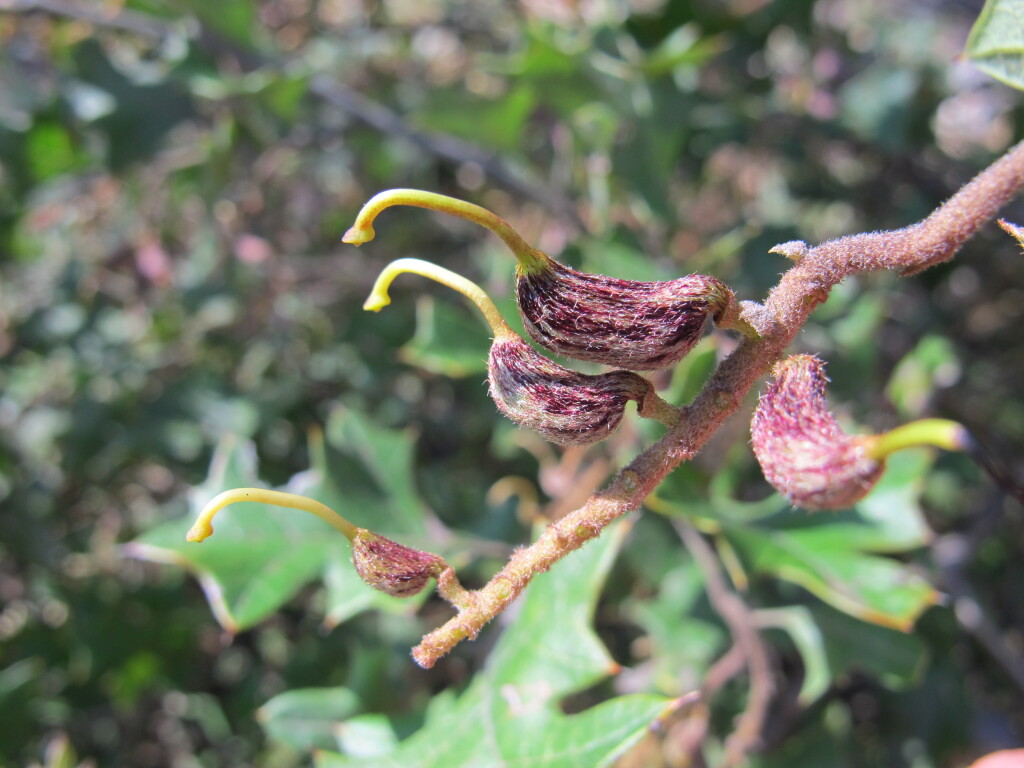Grevillea dryophylla
N.A.Wakef. Goldfields GrevilleaSpreading to erect shrub, 0.3–1.2 m high. Branchlet indumentum villous. Leaves usually 3–7-partite or -fid, rarely simple and entire or dentate, 3–8.5 cm long, 2.5–7 cm wide, lateral primary lobes 2–5-dentate or simple, basal lobes 0.6–3 cm long, 0.5–2 cm wide; lower surface with an open to moderately dense indumentum of wavy to curly hairs; margin shortly recurved. Conflorescences terminal, erect to decurved, simple, secund to subsecund, 1–4 cm long; peduncles 5–10(–13) mm long, 0.8–1 mm wide; rachises tomentose; perianth green to brown or yellow, outer surface subsericeous to loosely tomentose, inner surface glabrous; pistil 13.5–15.5 mm long, ovary stipitate, subsericeous to subvillous, style dull yellow to pink or red, glabrous, pollen presenter oblique. Fruits subsericeous with red-brown dorsal longitudinal markings. Flowers Aug.–Nov.
MuM, VVP, GipP, Gold, DunT. Fairly common in the Western Goldfields in the Bendigo-St Arnaud-Maryborough-Castlemaine district. Grows in dry eucalypt forest (box-ironbark-stringybark associations) in poor stony or gravelly soil.
The open, evenly distributed and persistent indumentum on the upper surface of the mature leaf is a useful character in contrast to some closely related species. Sometimes confused with Grevillea floripendula, which has a thin, wiry glabrous peduncle. Can also be confused with Grevillea microstegia which has narrower leaf lobes < 5 mm wide.
Makinson, R.O. (1996). Grevillea. In: Walsh, N.G.; Entwisle, T.J., Flora of Victoria Vol. 3, Dicotyledons Winteraceae to Myrtaceae, pp. 845–870. Inkata Press, Melbourne.
 Spinning
Spinning
